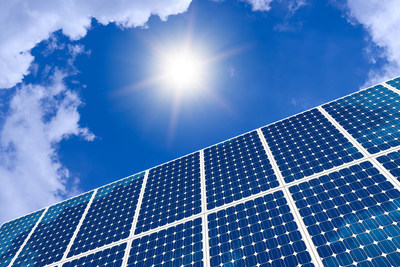Nearly $1 Trillion in Investments Estimated by 2030 as Power Sector Transitions to a More Decarbonized and Flexible System
Distributed generation will account for 10% of the world's global installed power generation capacity by 2030 and will be higher in developed economies,finds Frost & Sullivan
SANTA CLARA,California,June 16,2020 -- Frost & Sullivan's recent analysis,Growth Opportunities in Distributed Energy,Forecast to 2030,finds that the rate of annual investment in distributed energy resources (DER) will increase by 75% by 2030,with the market set for a decade of high growth. Favorable regulations,declining project and technology costs,and high electricity and demand charges are key factors driving investments in DER across the globe. The COVID-19 pandemic will reduce investment levels in the short term,but the market will recover. Throughout the decade,$846 billion will be invested in DER,supported by a further $285 billion that will be invested in battery storage.

Frost & Sullivan - Distributed Energy Resources
For further information on this analysis,please visit: http://frost.ly/467
"The DER business model will play an increasingly pivotal role in the global power mix as part of a wider effort to decarbonize the sector," said Maria Benintende,Senior Energy Analyst at Frost & Sullivan. "Additionally,solar photovoltaic (PV) will dominate throughout the decade. Residential solar PV will account for 49.3% of total investment ($419 billion) with commercial and industrial solar PV accounting for a further 38.9% ($330 billion)."
Benintende added:"In developing economies,DER offers a chance to bridge the electricity supply gap that still exists in a number of country markets. Further,in developed markets,DER is a key part of the transition to a cleaner and more resilient energy system."
DER offers significant revenue growth prospects for all key market participants,including:
Technology original equipment manufacturers (OEMs): Offer flexible after-sales support,including digital solutions such as asset integrity and optimization services for their installed base.
System integrators and installers: Target household customers and provide efficient and trustworthy solutions with flexible financial models.
Energy service companies (ESCOs): ESCOs should focus on adding DER deployments to expand and enhance their traditional role of providing energy savings and demand-side management services to customers.
Utility companies:Deployment of DER can createnew revenue streams for utility companies,from real-time and flexibility markets. Further,DER provides an opportunity to aggregate service offerings and expand the customer base.
Growth Opportunities in Distributed Energy,Forecast to 2030 is the latest addition to Frost & Sullivan's Energy and Environment research and analyses available through the Frost & Sullivan Leadership Council,which helps organizations identify a continuous flow of growth opportunities to succeed in an unpredictable future.
About Frost & Sullivan
For over five decades,Frost & Sullivan has become world-renowned for its role in helping investors,corporate leaders and governments navigate economic changes and identify disruptive technologies,Mega Trends,new business models and companies to action,resulting in a continuous flow of growth opportunities to drive future success. Contact us: Start the discussion.
Growth Opportunities in Distributed Energy,Forecast to 2030
MF1A
Contact:
Jaylon Brinkley
E: jaylon.brinkley@frost.com
T: 210.247.2481
Photo - http://cusmail.com/res/2023/07-27/11/b3d3b7d86f26a0cfbe5d1aa29cd1b966.jpg